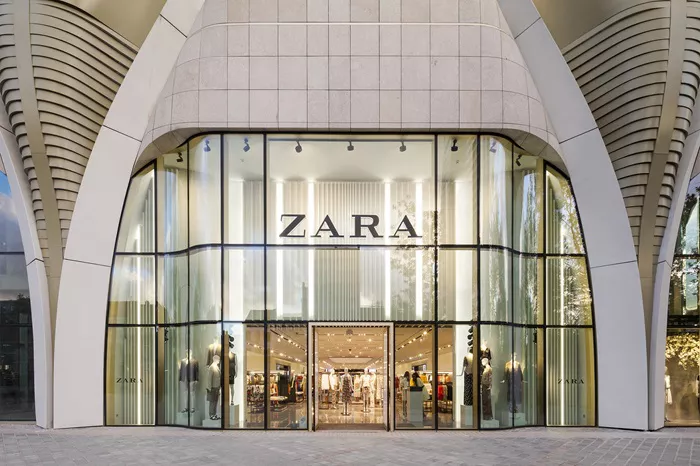It’s going to be a very sexy summer, full of romance, denim and rock and roll.
At least that’s what Mehdi Susan says. He should know. He’s the designer behind one of the most successful brands on the high street, Zara.
Zara is owned by Inditex, the world’s largest fashion retailer, which runs a chain of stores including Massimo Dutti and Pull & Bear.
The company relies on 1,800 suppliers worldwide, but almost all of its clothes are shipped to Spain, where it’s based, and then to stores in 97 countries.
Zara doesn’t advertise and rarely gives interviews. But on the 50th anniversary of its first store, I visited its sprawling campus in Galicia to meet the boss and staff, giving a rare glimpse into how the secretive brand operates.
It finds itself having to deal with a fast-changing market, growing competition from ultra-cheap online retailers Shein and Temu, which ship directly from China, and uncertainty about US tariffs.
But Oscar Garcia Maceiras, Inditex’s chief executive, says US President Donald Trump’s tariffs will not disrupt its supply chain or change Zara’s plans for further expansion in the US, its second-largest market.
“Remember that for us, diversification is key. We produce in almost 50 different markets with non-exclusive suppliers, so we are very adaptable to change,” he tells me.
Since the first store opened not far from the town of La Coruña, the business has certainly adapted and grown.
The company now has 350 designers on staff, with more than 40 different nationalities.
“There are generally no rules. Everything depends on the feeling,” says Mehdi, who is responsible for launching the season’s key pieces.
He says inspiration can come from anywhere, from “the street” to the cinema or even the catwalk. He likes to sketch out his ideas after creating the all-important mood board.
Listen to the BBC go behind the scenes at Zara’s headquarters
In the cutting room, designs are made into paper patterns and pinned onto models. Dozens of seamstresses are on hand to make the first fabric samples for the first fittings.
Pattern maker Mar Marcote, who has been in the business for 42 years, still uses a magnifying glass to examine each garment before it is finally put into production.
“It’s a great feeling when you finish a piece and it looks good, and sometimes it even sells out,” she says.
Zara is a business that is changing the way we shop.
In the past, retailers released only two main collections a year: spring/summer and autumn/winter. For decades, most chains outsourced production to lower-cost factories in the Far East, with delivery times of up to six months for garments.
Zara bucked tradition by sourcing much of its clothing closer to home and updating its products more frequently. This means it can respond more quickly to the latest trends, with new pieces arriving on shelves every week.
More than half of the company’s clothing is made in Spain, Portugal, Morocco and Turkey. There is a factory at the company’s headquarters that makes small batches, and seven more factories nearby that the company also owns.
As a result, it can turn around products in a matter of weeks.
Fashion basics made in countries such as Vietnam and Bangladesh take longer to deliver.
Logistics and data are other factors in its success. Every garment is packed and dispatched from its distribution centres in Spain and the Netherlands.
“What is absolutely critical is accuracy,” says Mr Marcellus, the chief executive.
“This enables us to make the right decisions at the last minute in order to properly assess customer preferences and thus adapt our fashion proposition to the profile of customers in different regions.”
In other words, getting the right product to the right store.
At headquarters, product managers receive real-time data on how clothes are selling in stores around the world, as well as crucial customer feedback, which is then shared with designers and buyers who can adjust seasonal collections based on demand.
Unlike some other high street rivals, it only discounts during its twice-yearly sales events.
But is Zara starting to lose its shine since sales growth slowed at the start of this year?
“The key challenge for Inditex is to remain competitive in a fashion world that is moving faster and cheaper,” said William Woods, European retail analyst at Bernstein.
Not only are mainstream rivals such as H&M, Mango and Uniqlo trying to catch up, but Shein and Temu have also disrupted the market.
Shein had global sales of $38 billion last year, just behind Inditex.
Asked how much of a threat the success of Shein and Temu poses to Zara, Mr Maceiras stressed that its business model does not rely on price.
“Of course, we want to offer our products to our customers at an affordable price. But it is crucial for us to offer our customers fashion that inspires, combines quality, creativity and sustainability.”
Zara has come a long way since founder Amancio Ortega started it.
The company is still majority owned by his family, with his daughter Marta now chairing the group.
Mr Ortega, now 89, remains famously reclusive but still comes to visit, according to Mr Marcelas.
“He is truly present every day, both physically and spiritually.”


